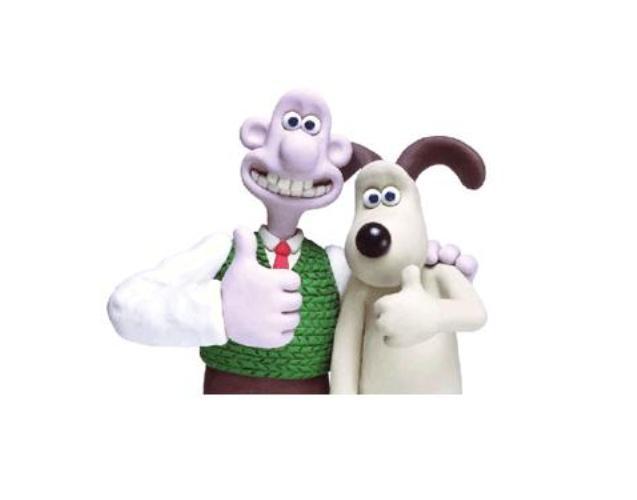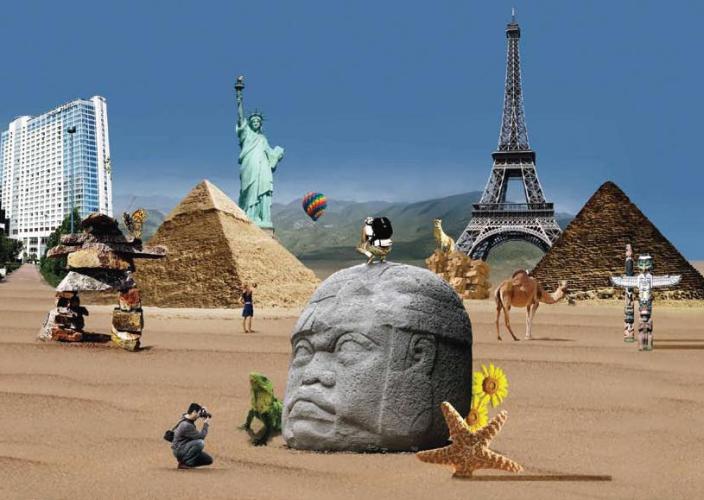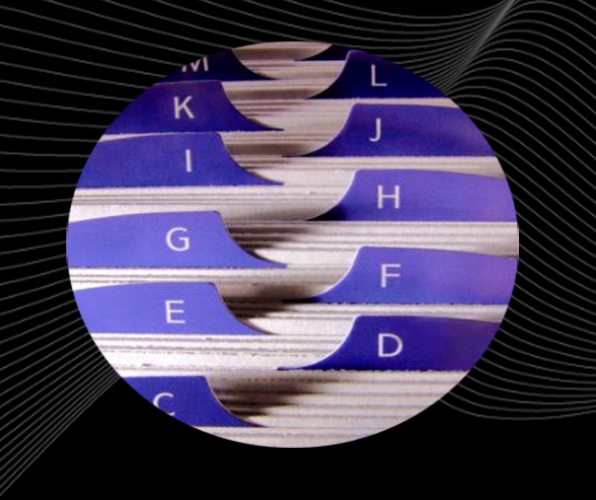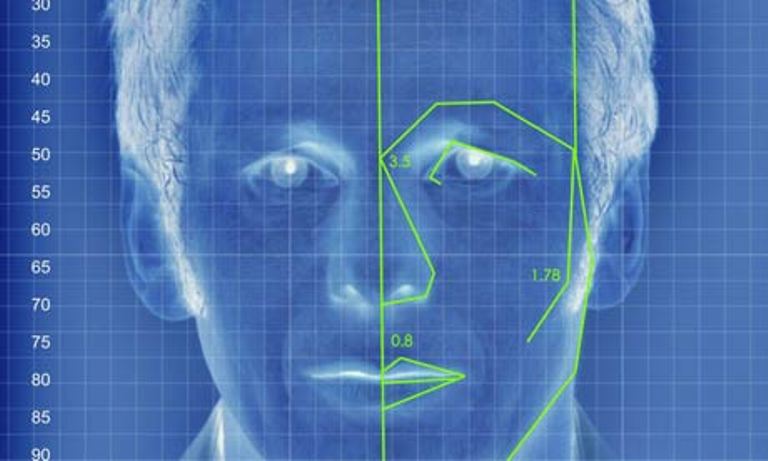Por: WIPO MAGANIZE
Aardman, creators of Britain’s national treasures, Wallace & Gromit, have learned how to retain, and profit from, their intellectual property (IP). This article was first published in the May 2011 issue of the e-newsletter, IP Insight, and has been adapted with the permission of the IP Office of the United Kingdom.
Aard Man began life as a spoof superhero. He was sold to the BBC in a short animation for £25 and the eponymous company was set up to bank the check. In the far-off days of the 1970s, no one imagined how valuable the firm’s characters would become.
Today, Aardman is an Oscar-winning animation studio working on three sites in Bristol, U.K. The firm currently employs over 500 people to work on its productions, including a new movie with Sony Pictures, Arthur Christmas, due for release later this year.
“Everything we do is underpinned by intellectual property,” says Sean Clarke, who joined Aardman from Disney 12 years ago to become the company’s Head of Rights. “As a company, we have developed our ability to create IP that goes across all platforms.”
“If our characters are going to have any kind of value or make a return, we have to be sure we can take them to market securely. So over the years, the IP Office has been one of our key partners. Our IP is what makes us.”
Aardman’s first hit was a cheeky clay model called Morph. He was created on the kitchen table of the two founders, David Sproxton and Peter Lord, and stole the show on Vision On, a BBC arts program for children.
Morph was followed by Wallace & Gromit, a comical pair of inventors dreamed up at film school by Nick Park. He is now a director at Aardman, which gave him the platform to turn the characters into global movie stars and multiple Oscar winners.
Since then, characters such as Shaun the Sheep and fellow flock member Timmy have spun off into their own TV shows, which now play in 120 different countries around the world.
In parallel with its own creative work, Aardman uses its distinctive capabilities in clay modelling and computer-generated animation to produce advertising campaigns, as well as videos for music stars. About a quarter of its annual sales comes from these commercial commissions. The other three-quarters are based on projects in which Aardman has a stake in the IP.
In line with the experimental style of its founders, the company is still set up to keep the creative process as fluid as possible. “We like people to move from project to project,” says Mr. Clarke. “The challenge is the same whether it’s a movie, commercial or TV show: to invent a character in a story with a beginning, middle and end.”
“Our creatives always work with a mentor to progress an idea into a story, into a treatment, into a storyboard and into an animation. When they join the company, everyone signs over their copyright in their work to us. We make sure that we strike a balance by giving them an incentive to keep generating ideas.”
“At various points in a production, we engage freelancers and third parties to help develop scripts, sets, models and the animation process. All the rights in this work done on our behalf have to be clearly transferred to us.”
Aardman is wary about even looking at unsolicited submissions. For one of its films, Chicken Run, someone from outside claimed it had originally been their idea. “In fact, our team dreamed it all up off site in the outer Hebrides,” says Mr. Clarke. “We have now adopted a protocol to consider ideas/submissions and state this clearly on our website to help protect our position in the future should anyone claim we have infringed their copyright and that they had sent us a suggestion at some point in the past.”
Confidentiality is also important in the creative process. “A lot of people want to know the inside story on our next production. It can be hard to keep quiet when you are expected to share what you are doing every minute of the day on Twitter. We just make sure that our people know what they can say and when. In launching a film or a program, it’s best to control the release of information to maximize the impact of your marketing.”
The production team has to be equally careful about checking every detail of the film. “We have two people who look over the movies to make sure we have clearance for any music or brands that we use.”
In fact, Mr. Clarke seeks to turn such appearances to Aardman’s advantage. In Flushed Away, the studio’s third collaboration with DreamWorks Animation, the boat on which the rats make their escape is called “The Jammy Dodger”.
As it is also a brand owned by Burton’s Biscuits, an on-pack promotion was agreed. “They were given a better presence in store on the shelf, and had an uplift in sales,” says Mr. Clarke. “We were also able to generate more awareness around the release of the film.”
In managing these sorts of commercial relationships, trademarks in characters like Wallace & Gromit are essential to Mr. Clarke and his 18 colleagues at Aardman Rights. “We look at any new production idea and the characters involved as they are developed. This enables us to set commercial expectations and understand if something is going to be a multi-platform property like Wallace & Gromit, or if it is going to do the rounds of festivals and only be released digitally.”
Usually, Aardman will register a character’s name as a trademark, although the use of Wallace is too widespread to qualify. The characters’ likenesses are registered by submitting a series of images and any associated logos. Domain names are protected as well. If a new character is shaping up to be a big hit, the trademark will cover all potential categories in which merchandise might be produced: for example, gifts, stationery, computer games, and clothing.
As well as approaching brands like Burton’s Biscuits directly, Mr. Clarke meets potential licensing partners at trade shows.
He is open to ideas, but screens all products carefully for quality and consistency. Any proposals must first be cleared, and then prototypes and samples are sent for approval.
Although the whole family can enjoy watching Wallace & Gromit, the associated merchandise tends to appeal to an older, British audience. Mugs and teapots do particularly well.
Shaun the Sheep and Timmy Time, two spin-off TV shows, have the potential to generate further income. They are directly aimed at a younger audience and as there is no dialogue they cross into international markets more easily.
When it was launched in 2007, Shaun the Sheep merchandise was originally aimed at a pre-school audience. However, explains Mr. Clarke, when planning a merchandise campaign “you don’t really know how the audience will react until you have launched the show. It turned out that whilst the show had a pre-school audience there was by far a bigger audience of older children and adults watching. So we had to create a new range of assets and re-launch the brand focusing on this opportunity.”
In negotiating these rights, Mr. Clarke says, you face an ever-changing landscape. As sales of DVDs, in particular, are falling away, he spends a lot of time working out how best to reach audiences through iTunes, IPTV, mobiles and video-on-demand. “The digital space changes so fast; we try to stick to non-exclusive arrangements. There are so many platforms open to us; if anyone wants an exclusive, they are going to have to pay for it substantially.”
Mr. Clarke’s team keeps a central record of where all Aardman’s trademarks are registered, as well as the hundreds of licensing agreements that it concludes. As far as possible, he tries to use a standard set of terms, but there will always be situations which call for tailor-made agreements, for example in relation to new areas of exploitation.
In marketing Aardman’s catalogue, Mr. Clarke’s objective is to make the most of big releases. To leverage the publicity generated by the release of the latest Wallace & Gromit short film, A Matter of Loaf and Death, the three previous films were made available on DVD, re-mastered in high definition and promoted on iTunes. A Wallace & Gromit film, however, is released on average only once every five years. So Mr. Clarke is developing other ways to maintain the audience’s interest in the characters. In 2009, in partnership with the U.K. IP Office, Aardman produced a themed exhibition for young innovators which opened at London’s Science Museum. It is currently on display in the U.K., at the Life Science Centre in Newcastle-upon-Tyne.
Even Morph is making a comeback, having lent his name to “make your own Morph” model-making kits, T-shirts, bookends and greeting cards.
“It’s nostalgic, of course,” says Clarke. “These are usually gifts for adults who remember Morph from their childhood, but these rights have powerful associations. Through trademarks, you can retain them forever.”
Lessons from the Aardman experience:
- Search the markets in which you plan to operate for any competing IP.
- Evaluate each idea and research your IP needs in line with your expectations of how well an idea might perform commercially.
- Reserve domain names as early as you can.
- Use IP office resources to identify the form of IP that will give you the best return.
- Establish ownership in any ideas, while ensuring employees and suppliers have an incentive to keep new ones flowing.
- Always look at different ways to promote and sell your catalogue of products and be prepared to explore new routes to market. Be sure not to give away exclusive deals too soon.
- When starting out as an animator, go to a brand licensing trade show and find an agent to arrange licensing deals. Be clear about how you want your name to be used.
- If you find it tough to enter the market, consider a partnership with someone who can present your idea in a more compelling way. This means sharing the reward, but reaching market more quickly.
- Keep a register of all your IP rights and all your licensing deals. Once your business has expanded you can hire a specialist to manage the portfolio.














